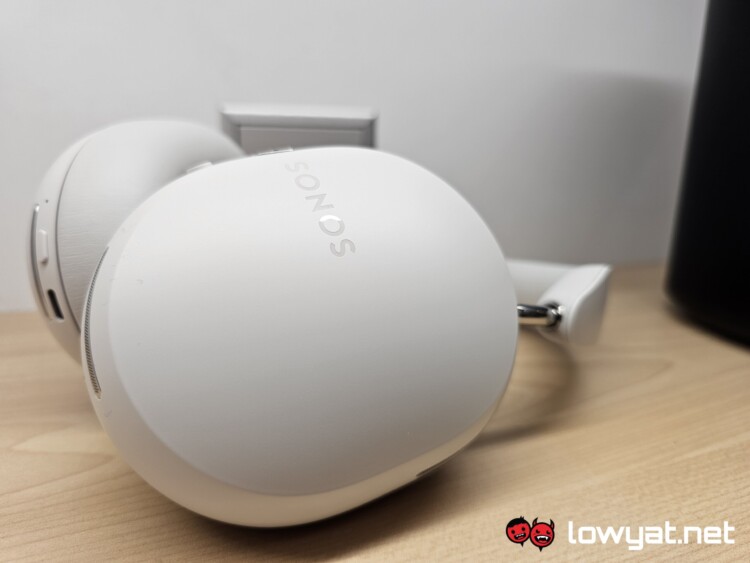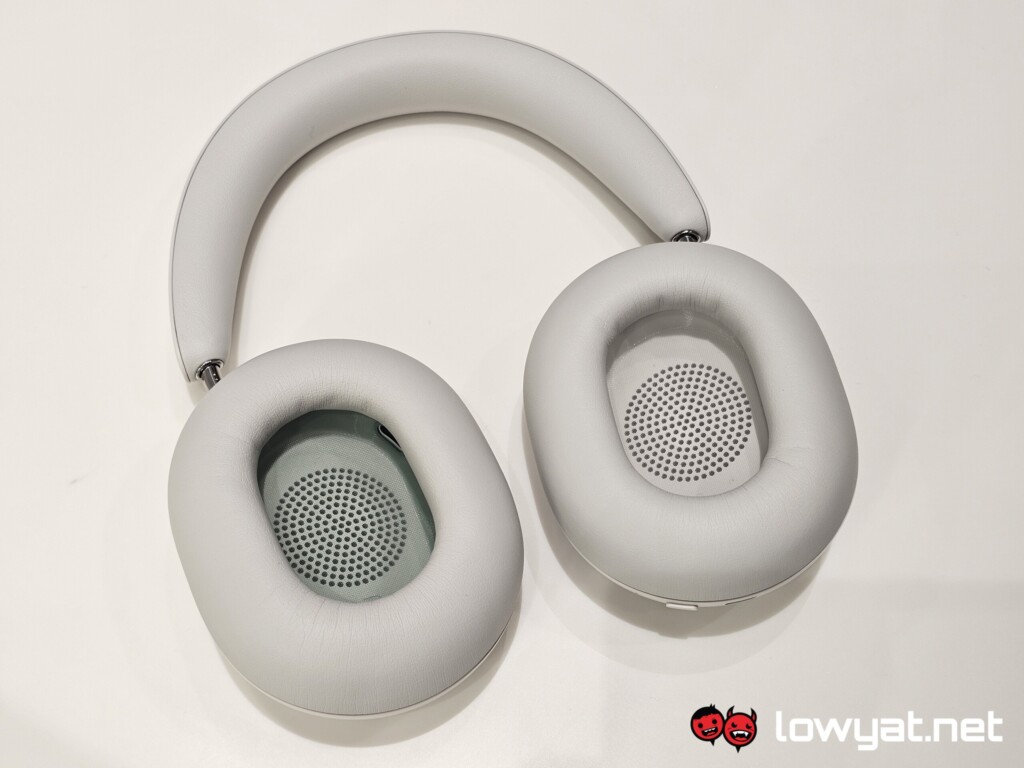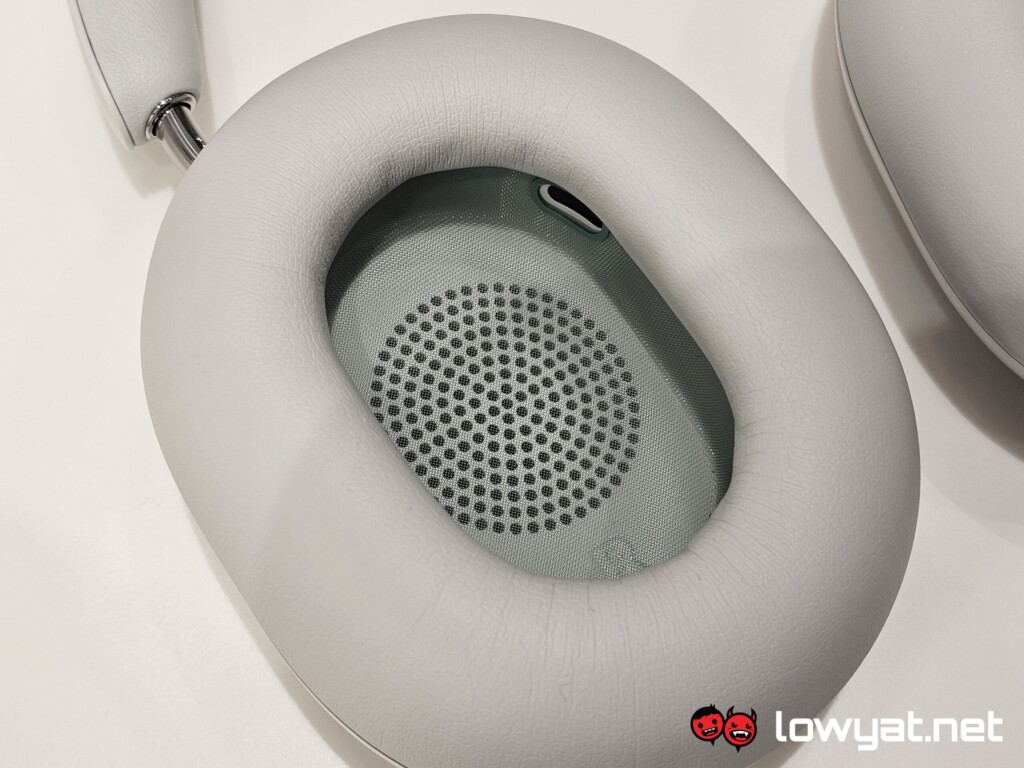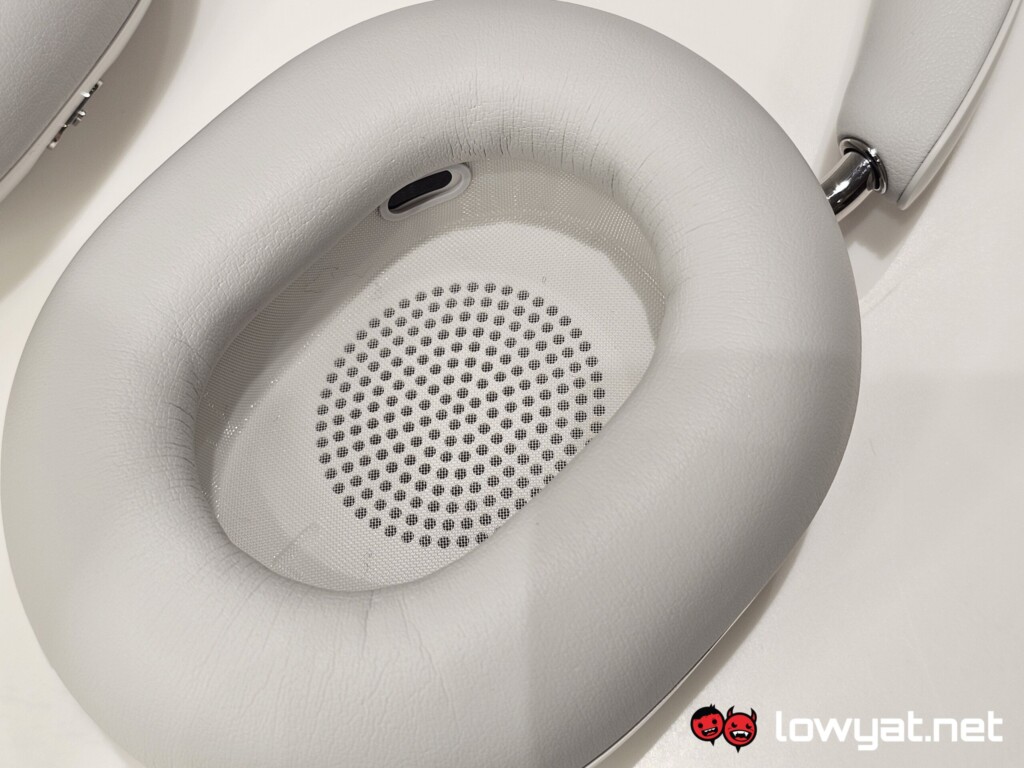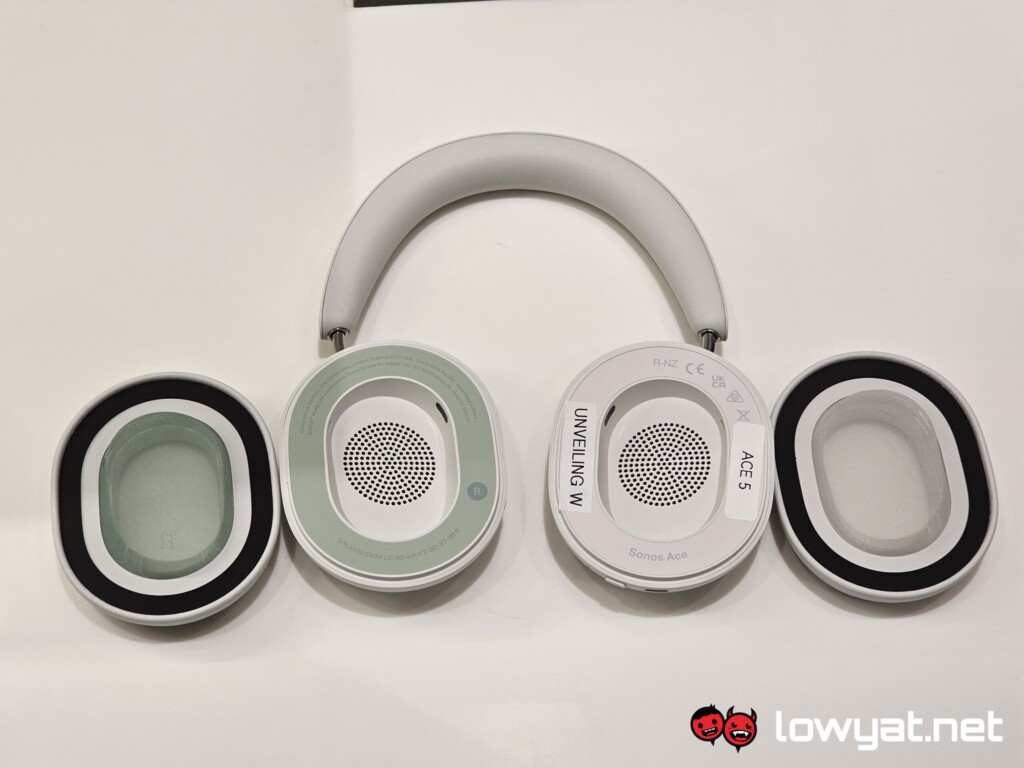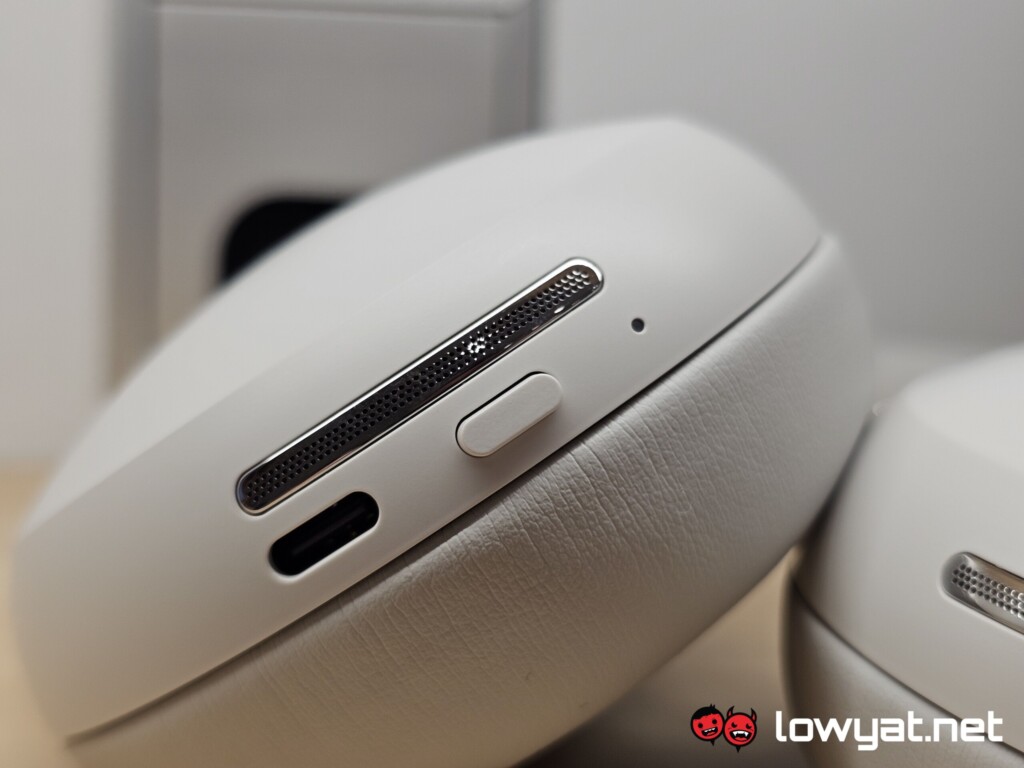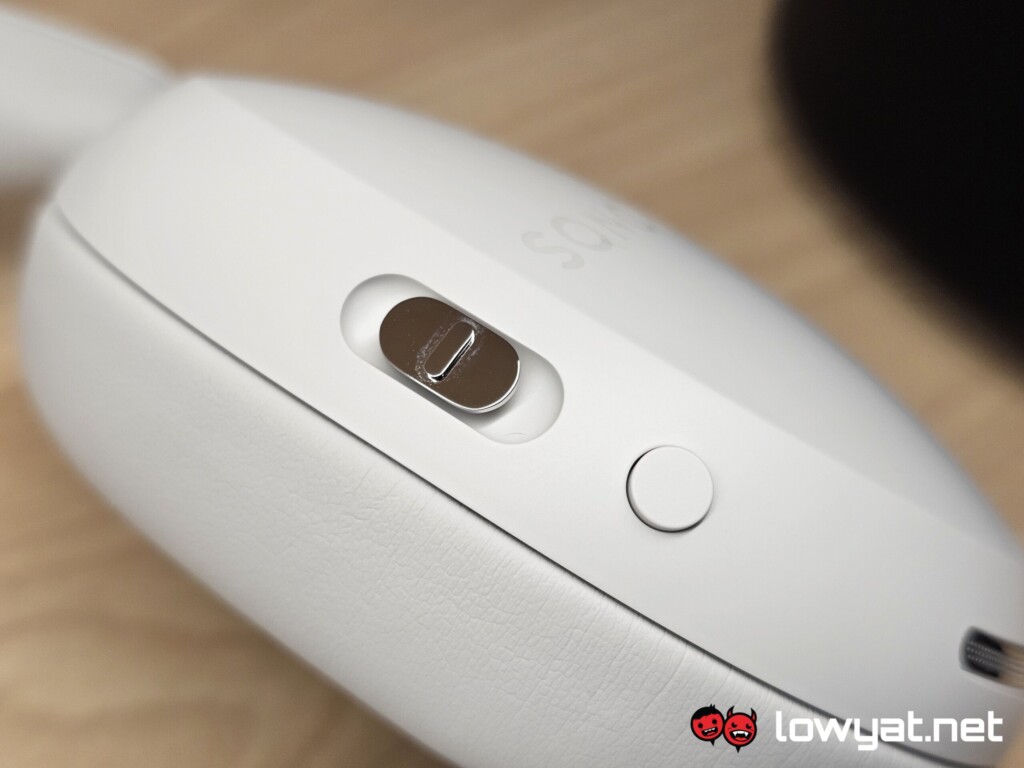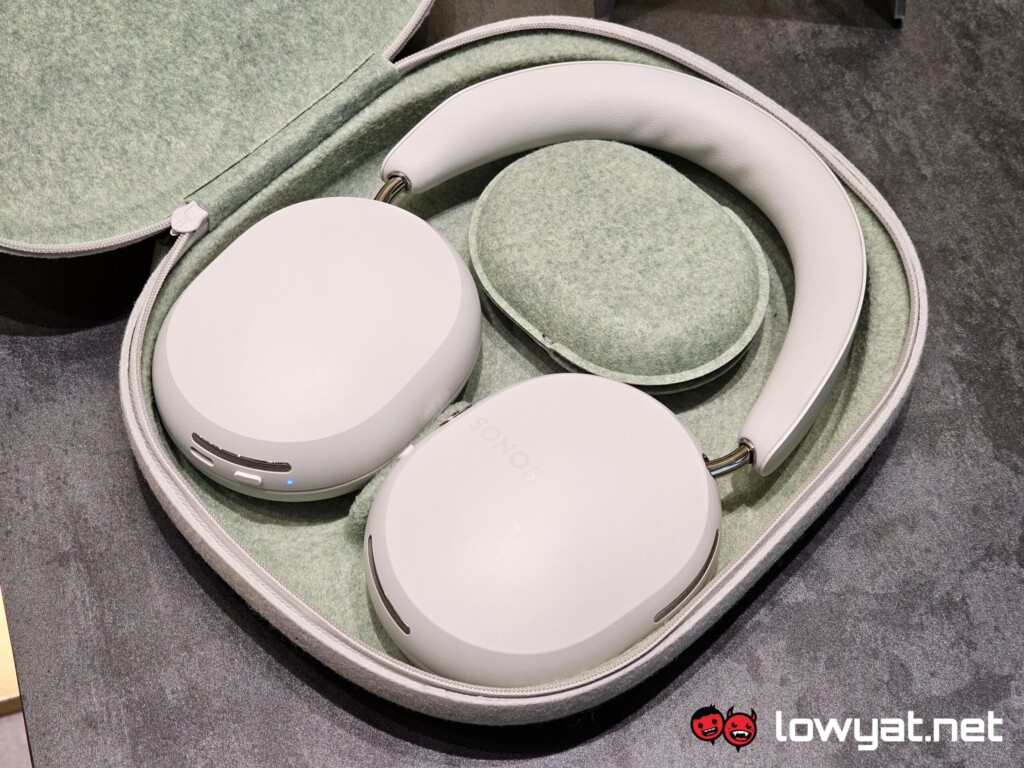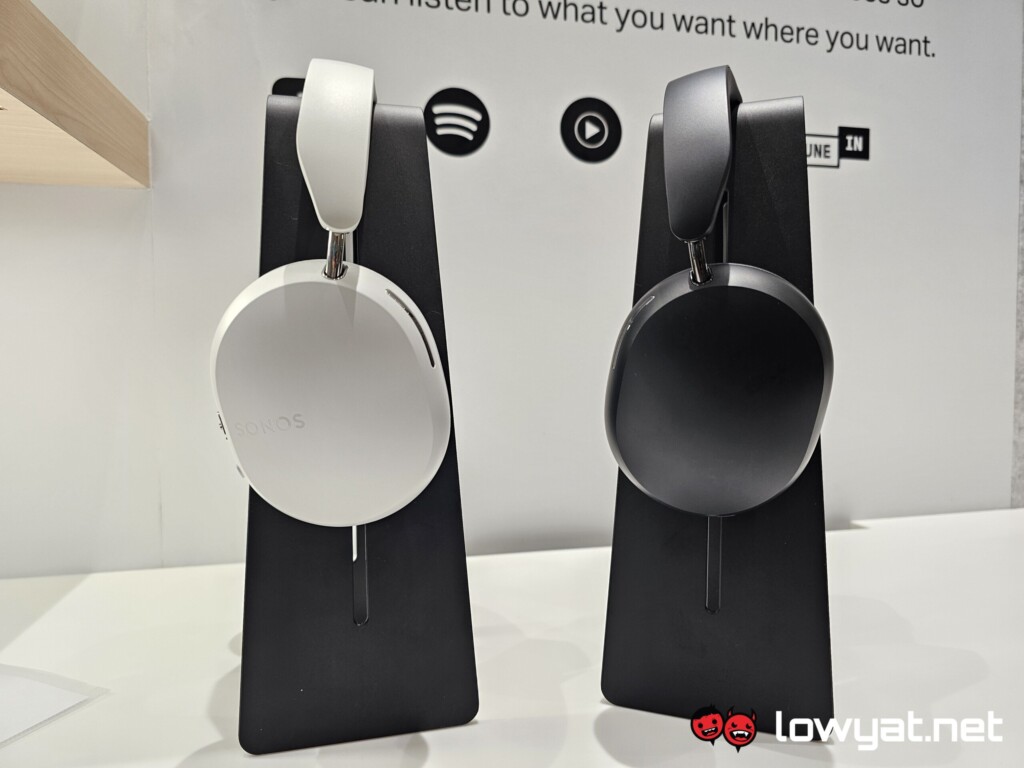Ever since the first leaks of Sonos’ headphones – they weren’t officially called the Ace yet, for obvious reasons – sprung from the audio brand’s rusty plumbing all those years ago, I’ve pestered the local distributor, TCAcoustic, so much, that it actually bordered on annoying. The good news, for me at least, is that the wait is finally over, and I finally have the answer to my giddying questions.
If there’s one thing Sonos has always been particular about, it’s first impressions, and with the Ace, there’s a fair bit to be impressed about. So, let’s start with the basics: the design. Out of the box, the Ace isn’t trying to garner attention by being garish. The overall design is simple, plain even, and evokes a sense of familiarity, looking like a smaller version of the Apple AirPods Max. Is that a fair comparison? I would suppose so, given that those are the headphones that Sonos has set the bar at.
The headband, as taut, durable, and tensile as it is, is yet another point to the simple elegance of the Ace. Whether in white or black, it exudes a personal and human element that modern headphones tend to lack these days. If I didn’t make it clear before: simplicity is the name of the game, and a lot of thought has gone into the design of the headphones, in the grand effort of making this as uncomplicated an experience for the user as it can.
It’s not a joke. The back of the headband – specifically, the point where the axles meet with the earcups – has indents there because Sonos says those were made in part of the way we tend to handle and hold headphones. Again, small focus, maximum comfort. On the subject of comfort, the earcups, in my brief time with them, feel comfortable to both my ears and head. The tautness of the headband is such that my head doesn’t feel like it’s being crushed over prolonged periods. That, and the fact Sonos opted for soft memory foam? That’s a plus in my books.
Those Ace earcups aren’t just soft either, they’re easy to clean or replace in the event of wear and tear, thanks to Sonos’ decision to use detachable magnets. Like many things in life, the technology isn’t groundbreaking but the bottom line here is that not a lot of brands use the medium. What’s even more brilliant is how the brand has colour-coded each earcup – right is green, left is white – and made it so that you can’t swap them with the other side. No, seriously, they won’t fit no matter how much you try. God knows I tried.
The next point of simplicity for the Ace lies in its controls. There is a total of three buttons on the headphones – the power button on the left earcup, and ANC and Content button on the right. The first button is self-explanatory; turn on the headphones and hold it long enough, you’ll activate the Bluetooth pairing mode. Likewise, the ANC button tells you all you need to know about the function. As for the Content button, that’s just a fancy name by Sonos for the media control button.
In practice, the Content button slides up and down, and can be pressed in a series of clicks to perform certain functions. To put it simply, volume is controlled via the slider, while pressing it once either plays or pauses your media. If you’re skipping ahead to the next track, you click it twice, and if you’re repeating it, click it thrice. Honestly, I prefer this control scheme over gesture controls on the Sony WH-1000X series headphones, because I’m less likely to skip ahead by accident because my hand or fingers just brushed across the gesture controls by mistake.
One of the gimmicks that Sonos was really hyped to show off was the seamless transition between it and its soundbars. Basically, double-tapping the Content button when you’re not playing anything will automatically swap the sound from the home theatre system directly to it, and vice versa. It’s nifty, I’ll give it that, but the catch here is that this function is limited to Sonos soundbars, which really makes it more of a gimmick than a standard feature. I get it, it’s an ecosystem thing, and like Apple and Samsung, I understand why the audio brand is doing this. On the flip side, if you’ve already got a Sonos soundbar, you’re pretty much set if you invest in these headphones.
As for the audio quality of the Ace, again, my time with the headphones was brief and I therefore can’t provide a conclusive report yet. However, in that short testing period, I found that it tends to highlight the lows, with the bass beats in songs like Sam Smith’s I’m Not The Only One really thumping the back of my skull. On that note, at least it rattled the back of my skull and not directly into my eardrums.
One thing that I feel the Ace nails down is sound staging. With The Eagles’ 1996 Live performance of Hotel California, you can hear where each string on which guitar is being picked, along with the moment Don Henley chimes in with the percussions, right before he starts singing.
The Sonos Ace is already available for preorder and will be available for purchase from 5 June onward. It retails at RM2,299. I’ll also be reviewing on the headphones once the brand provides us with a unit, so keep an eye out.
Follow us on Instagram, Facebook, Twitter or Telegram for more updates and breaking news.


